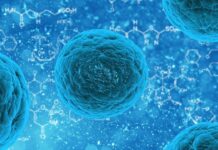When you think about the brain, you probably picture a soft pile of pink jelly, all folded and wrinkly—relatively unimpressive for something that controls all our thoughts and everything in our bodies. But if you go a little deeper, or rather, a little higher magnification, a different picture of the brain emerges.
Millions and millions of neurons and support cells in a vast, interconnected network.
Once you appreciate this complexity, it’s almost hard to believe that most of our brains develop normally and work perfectly for our entire lifetime. Stop the blood flow to a small section of this network and you’ve had a stroke. Interfere with the development process and you could end up with cerebral palsy.
As a computer scientist working in computational network biology, Gary Bader is used to looking at large, interconnected sets of data. In his Medicine by Design Team Project, he is collaborating with neuroscientists like Freda Miller to try and understand how the complex networks of the brain evolve, both during normal and abnormal development, and during the aging process.
If they can discover the critical circuits that control brain tissue growth, then they can recreate these same conditions to repair the injured brain after stroke or reverse neurological disorders like cerebral palsy.
“Collaboration is vital,” says Bader. “As computer scientists, we don’t actually look at the biological systems directly… [We’re] completely dependent on all of that information coming in from biologists all over the world.”
Miller is just as keen to be working with people who have complementary skill sets.
“I’m not a computational biologist. And the really exciting thing to me is that I’m collaborating with people who honestly do things that I would have thought were sci-fi.”
But what excites Miller the most about these collaborative projects is not necessarily the outcomes; it’s the ability to train students in completely new, multi-disciplinary fields.
“These are not… clones of me or clones of Gary Bader; they’re going to be the fusion of the two of us,” says Miller. “It’s the next generation.”





































